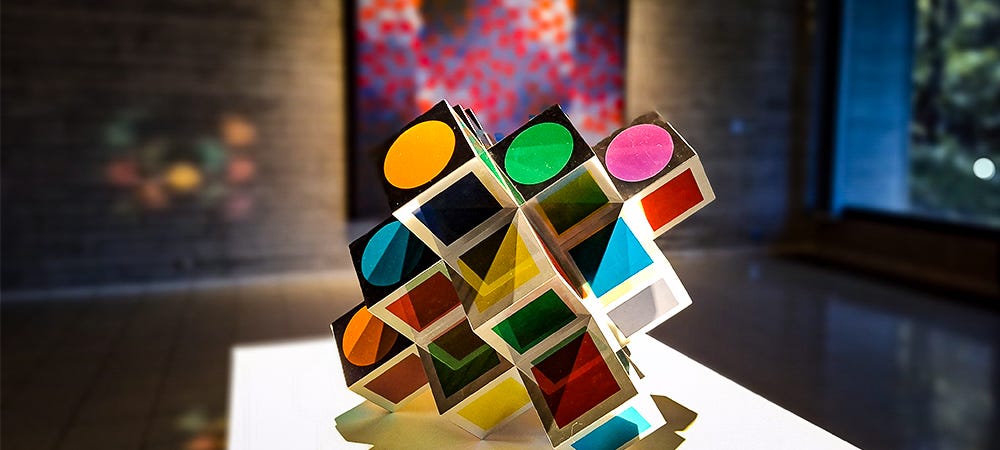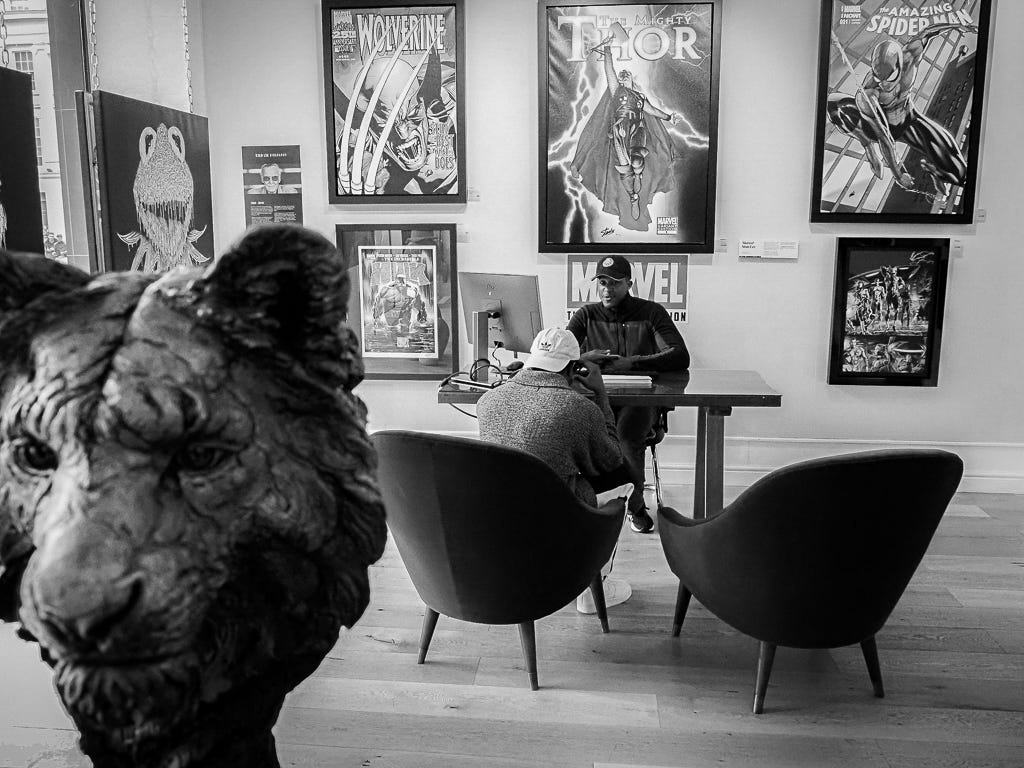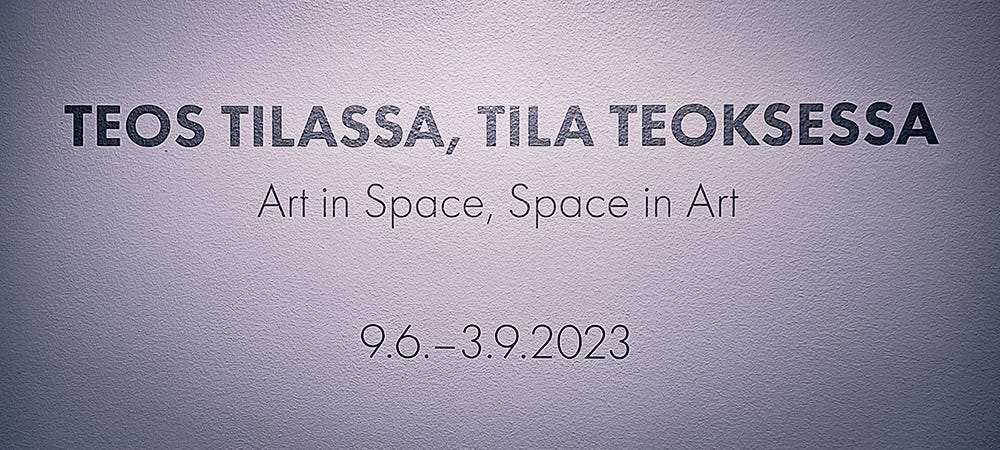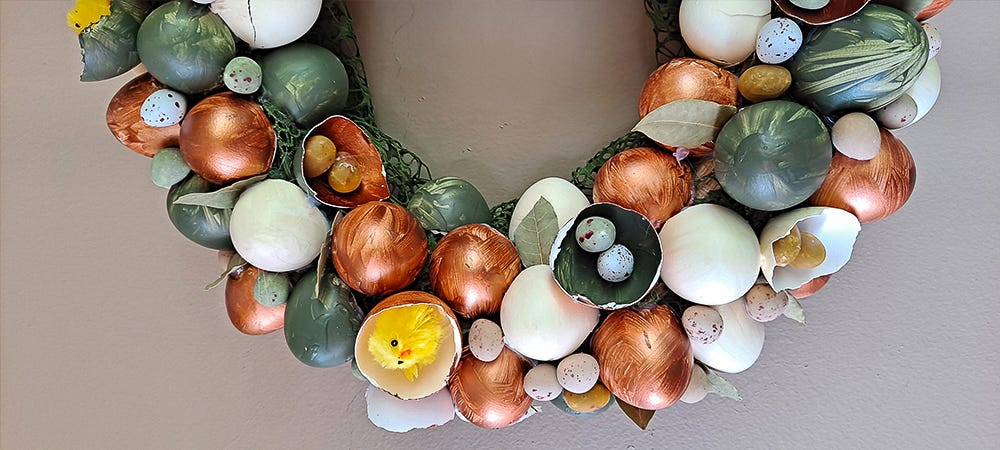good design might save the world: on aesthetic + space
Considering the impact of our environments and the need for shrines in the spaces we inhabit. Also, Greta Gerwig finally talks about Narnia!
My whole crib looks like an art show.1
I won’t lie; I get miffed when people visit my home and don’t ask about any of the décor. Okay, the giant map of Middle Earth is self-explanatory: I’m a huge nerd. (Shoutout to the repairman who saw it once and said, “Ah, I see you’re a man of taste.” Because, yes.) But every piece of artwork, every decorative trinket, means something or has a story attached to it. It’s not just a gallery of cool things. I chose each element and piece of furniture to contribute to an aesthetic, an aura. A vibe of cozyness crossed with thick simplicity. A warm space conducive to both rest and productivity. I love coming home.
Intentional or not, a space’s aesthetic evokes feelings and ideas: the awe and reverence of an ancient cathedral, the cold sterility of a hospital waiting room, the efficient, aggregate warmth of a high-end bank lobby, or the chummy expectation of a crowded house with delicious smells wafting from the kitchen. What’s the idea you get when you walk into a room, into someone’s home? Is it the happy professionalism of a crib that “looks like an art show,” as Tobe Nwigwe sings in what is perhaps a riff-response to his fellow rappers who brag that their crib “feels like a hedge fund”2? (Who wants that?)
the effects of space
While the ancient Chinese practice of feng shui might be too mystical for some, scientists today acknowledge that positive things happen when humans are in harmony with their environment. Studies show that the way a space3 is designed impacts mental health, physical well-being, creativity, and self-reflection—as a New Scientist report summarizes:
Hospital patients whose rooms overlook natural settings tend to need lower doses of painkillers and leave hospitals earlier than those whose windows look out over a brick wall.4
Students who can gaze out over green views while studying exhibit higher levels of mental focus.5
People surrounded by wood-based furniture feel happier and less fatigued,6 and being able to feel or smell wood decreases blood pressure7 and relaxes the body.8
The layout of a building or room influences the level of relaxation or anxiety one feels: open-plan designs lead to more relaxation, while smaller, enclosed spaces produce higher anxiety levels.9
Lighting is important too: dimmer lighting leads to less self-consciousness and higher levels of creativity,10 while bright lighting encourages self-reflection.11
One surprising aspect of research into the effects of space design is the impact of chaos and order in an environment. The sociological theory dubbed “broken windows” connects disorderly environments with small acts of rule-breaking and theorizes that those small acts ‘snowball into major communal problems such as delinquency and criminality.’12 Experiments found that people who viewed “visually disordered” spaces were more likely to cheat on a test than people who viewed orderly designs. In short, orderly design encourages good moral behavior. Ergo, good design might save the world.
All of this tells us that one way we can love ourselves, love our neighbors, and love the world is by being intentional and considerate about the spaces we inhabit, control, and invite others into.
shrines in the wasteland
Remember when it seemed like everyone was going around their homes, picking things up, and asking, “Does this spark joy?” Marie Kondo’s decluttering methods had people tossing stuff left and right. At first blush, the methods encapsulated by the trend-worthy question seem to be an extreme form of minimalism because very few objects actually spark joy in the spaces we inhabit and control. But, upon closer inspection, we find that Mrs. Kondo is getting at something different: not necessarily living with less but living in a space that holds truly cherished items, items that connect us to our pasts and important memories.
I used to think I was a minimalist of the “less is more” variety, but I’ve discovered the value of clutter. I have no actual use for the typewriter in my living room. But I do have use for the memory of a late night with friends in Amsterdam. We were making our way back to a parking garage when we noticed a typewriter tossed out on the sidewalk like yesterday’s trash. That’s why I keep it, because when will you get a typewriter (and a story) like that?
Annie Midori Atherton writes about the value of clutter (and not in the aesthetic sense) in her recent article, “Minimalism is Neat, but Clutter Makes a Home”:
I don’t necessarily love the look of mismatched junk congesting the nooks and crannies of my home, but the clutter satisfies a deeper emotional need. Collectively, it represents every stage of my life, the lives of relatives who have died, and now the life of my not-quite-2-year-old daughter. It connects me to people and times that would otherwise feel lost.
What we permit to remain in our spaces is another way of telling stories, reminding ourselves of the times through which we’ve lived. Often, we focus on capturing happy memories, the smiling faces of grandparents, spouses, and children. But we also need to be reminded of complicated, messy, dark times. We need shrines of memory that allow us to re-inhabit what’s gone before. Atherton writes:
When I reflect on the most memorable periods of my life, they’re not completely devoid of sadness; sorrow and disappointment often linger close by joy and belonging, giving the latter their weight. I want my home to reflect this nuance.
Not only is clearing our spaces of all signs of grief impossible to sustain, but if every room is scrubbed of all suffering, it will also be scrubbed of its depth.
going back in spacetime
We can tell a lot about what ancient people believed about the world and the ideas that shaped their mindset by paying attention to the aesthetic of the spaces they inhabited. Every aesthetic decision had depth. For example, the ancient Egyptians were divinity-minded and rooted in a strict power hierarchy. Their temples and palaces were decorated with depictions of gods and revered animal forms which dwarfed depictions of themselves. Furniture in the ordinary home was minimal, simple, unadorned—beds low to the ground—a reflection of the people’s belief that the gods and pharaohs were of a class they could never aspire to.13
The Greeks tended to keep all building materials in their natural forms; they didn’t overlay stone with gold or other precious metals. This reflected their love of nature and an outgrowth of arete, the simple pursuit of excellence as one of the values of their society.14
Toward the end of the Gothic era, Europeans were so concerned with the Church (the predominant force in cultural life) that the influence of cathedral designs made it into the home. Flying buttresses, pointed arches, and circular designs started popping up in residential structures.15 “The circle and the sphere, by virtue of having no beginning and no end, were associated with eternity and by extension with immortality and heaven; hence arches and vaults which are part-circular” presented themselves in residential designs.16
Almost every element of ancient aesthetic stems from beliefs that shaped the people and the life of a culture. I’m not so sure about our aesthetic intentions nowadays. The Cultural Tutor started an interesting discussion about the dangers of minimalist design, which seems to be everywhere. Intentional minimalism, he says, isn’t wrong, but the spread of “unconscious minimalism” has bequeathed to us a “lack of detail.” And where details are lacking, identity is lacking, character is lacking, story is lacking, meaning is lacking.
“God is in the details,” said the architect Ludwig Mies van der Rohe.17
We have a reduction ad absurdum of cultural aesthetics… Perhaps minimalist design is so prevalent because we no longer have anything to say. You don’t need me to explain what the Gothic cathedral says, for example. But the skyscraper? It doesn’t say anything, really. It’s just... *there*.18
But that’s the thing. We do have something to say. Things have been said that need to be remembered. And that’s why the aesthetic we bring to a space ought to include shrines to the events and ideas that have shaped us, that are important to who we are—deaths, births, periods of education, shifts in belief. Our spaces should bring us joy, but should also bring reminders of grief, accomplishment, failure, despair, and religious tutelage.
When the ancient Israelites received their laws from God, he said:
These commandments that I give you today are to be on your hearts. Impress them on your children. Talk about them when you sit at home and when you walk along the road, when you lie down and when you get up. Tie them as symbols on your hands and bind them on your foreheads. Write them on the doorframes of your houses and on your gates…19
Who says we must only wear the source of our shaping on our insides, in our heads and our hearts? Might we be better people if we wear what shapes us on our bodies and within the bodies we build for our bodies?
Hundreds of years later, when Isaiah condemns his people for abandoning their historic beliefs, he points to the aesthetic dimension as evidence of their corruption.
You have made your bed on a high and lofty hill;
there you went up to offer your sacrifices.
Behind your doors and your doorposts
you have put your pagan symbols...20
Our beliefs, the things that shape us, spin threads of evidence in the spaces we inhabit.
Let’s consider: What symbols are we placing behind our doors? What reminders of the past come to life in our homes? What shrines, what touchstones and Ebenezers, are we raising for ourselves and our communities? Are we crafting depthful, detailed spaces, spaces with character, story, and meaning? We should be, because the future of our culture (partly) depends on intentional aesthetic.
asides + signal boosts
While the bots send this to your inbox, I’ll be sitting in a theater watching Greta Gerwig’s Barbie. I’ve rewatched Little Women and watched Lady Bird and White Noise for the first time in the run-up. And, finally, Greta has spoken out about her next project—Narnia! It feels like a special treat in a world of network silence about this Narnia adaptation. Speaking on the Inside Total Film podcast, she said:
I haven’t even really started wrapping my arms around it. But I’m properly scared of it, which feels like a good place to start. I think when I’m scared, it’s always a good sign. Maybe when I stop being scared, it’ll be like, ‘Okay. Maybe I shouldn’t do that one.’ No, I’m terrified of it. It’s extraordinary. And so we’ll see, I don’t know… I want to do big things and small things and everywhere in between, and having another big canvas is exciting and also daunting.
Every Narnia fan is nervous about future adaptation attempts, but I think Gerwig’s starting in the right place—proper terror and humility in the face of an extraordinary task. I pray she does a really good job. (And, Greta, if you want a consultant to help get things right, my DMs are open. 😉)
Speaking of Tobe Nwigwe: someone introduced me to his music last year, and if you haven’t heard of him yet, you probably will. His fresh, compelling manner stands out from the sweeping generalities in rap today. He’s in a game all his own, and his songs’ lyrical turns are quite impressive. (“I leave a demon holier than nuns” is a personal favorite.) You may have heard his contributions to the Black Panther: Wakanda Forever or Transformers: Rise of the Beasts soundtracks. And I have it on good authority that his live shows double as stunning art pieces. Check out “LORD FORGIVE ME” below.
It’s not the End Times, it’s an End Time. Or at least that’s what Peter Turchin argues in a recent episode of Bari Weiss’ Honestly podcast. The Russian-American complexity scientist has made a career out of examining historical cycles, and he says thousands (millions?) of data points from the past can be used to predict when a society is moving into a period that some would consider ‘end times.’ It’s a fascinating discussion.
Tobe Nwigwe, “BRAVO”
Drake + 21 Savage, “Broke Boys”
I’m using “space design” instead of “interior design” to cover both exterior and interior spaces.
Roger S. Ulrich, “View Through a Window May Influence Recovery from Surgery,” Science, Vol 224, Issue 4647
Kate E. Lee, et al., “40-second green roof views sustain attention: The role of micro-breaks in attention restoration,” Journal of Environmental Psychology, Volume 42
Xi Zhang, et al., “Investigation variance in human psychological responses to wooden indoor environments,” Building and Environment, Volume 109
Satoshi Sakuragawa, “Effects of contact with wood on blood pressure and subjective evaluation,” Journal of Wood Science, Volume 54
Harumi Ike, et al., “Physiological effects of wood on humans: a review,” Journal of Wood Science, Volume 63
Alex Coburn, et al., “Buildings, Beauty, and the Brain: A Neuroscience of Architectural Experience,” Journal of Cognitive Neuroscience, Volume 29, Issue 9
Olga Kombeiz & Anna Steidle, “Facilitation of creative performance by using blue and red accent lighting in work and learning areas,” Ergonomics, Volume 61, Issue 3
Anna Steidle & Lioba Werth, “In the spotlight: Brightness increases self-awareness and reflective self-regulation,” Journal of Environmental Psychology, Volume 39
Hiroki P. Kotabe, et al., “The Order of Disorder: Deconstructing Visual Disorder and Its Effect on Rule-Breaking,” Journal of Experimental Psychology, Volume 145, Issue 12
Steven Snape, Egyptian Temples
William Bell Dinsmoor, The Architecture of Ancient Greece
Stanley Abercrombie and Sherrill Whiton, Interior Design & Decoration
Christopher Wilson, The Gothic Cathedral
The devil is in the details here because he may not have been the first to say it.
I’d beg to differ with the Tutor. The skyscraper does say something, just not anything good.
Deuteronomy 6:6-9
Isaiah 57:7-8









Very nice. I’m currently thinking about how to redesign our new home, and this got the wheels turning. Thanks.